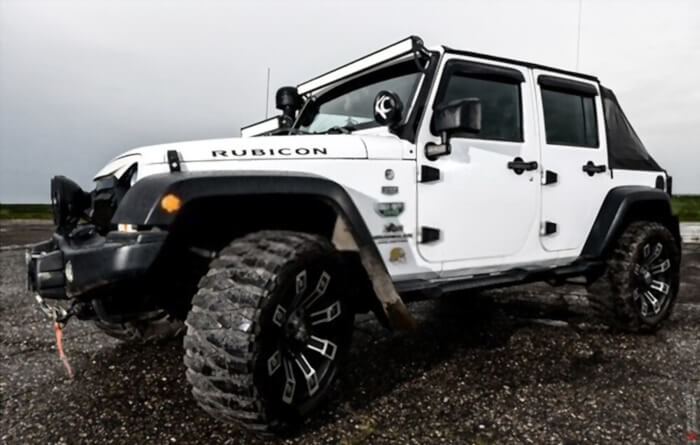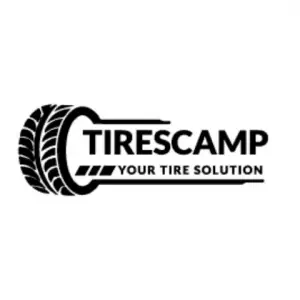Many Jeep Wrangler owners choose to upgrade to 30-inch tires. Doing this has many benefits, including increased ground clearance, better off-road capability, and a more aggressive look. However, there are also some downsides, such as a harsher ride and increased fuel consumption.
In this blog post, we’ll weigh the pros and cons of 30-inch tires on a Jeep Wrangler so that you can make informed choices about whether or not they’re suitable for you.
How Common is 30-Inch Tires Jeep Wrangler?
One of the most popular modifications for Jeep Wranglers is to install larger tires. Some people opt for 30-inch tires, giving the Jeep a more rugged look and improved performance on unpaved surfaces.
Unfortunately, installing 30-inch tires on a Jeep Wrangler can have some drawbacks. First, the more prominent tires may rub against the fenders or suspension, which can cause damage over time.
Additionally, the increased size may make the Jeep more challenging to handle on the road. If you decide to install 30-inch tires on your Jeep Wrangler, be sure to have it checked by a professional to ensure everything is installed correctly and there are no potential issues.
The Pros of 30 Inch Tires on a Jeep Wrangler
There are many reasons you might need to upgrade to 30-inch tires on your Jeep Wrangler. One of the most popular reasons is the increased ground clearance.
With 30-inch tires, you’ll have 2-3 inches of space between the bottom of your Jeep and the ground. This can be beneficial on and off-road, clearing obstacles more efficiently and avoiding getting hung up on rocks or other debris.
Another reason people opt for 30-inch tires is for the improved off-road capability. The larger tires provide additional traction in mud and sand, which can be helpful if you enjoy taking your Jeep off the beaten path.
Additionally, the increased size can give you more leverage when climbing steep hills or maneuvering over rough terrain.
Finally, many people prefer how 30-inch tires look on a Jeep Wrangler. The larger size gives the Jeep a more aggressive appearance, which some people find appealing. If aesthetics are important to you, 30-inch tires might be the way to go.

The Cons of 30 Inch Tires on a Jeep Wrangler
Of course, there are also some downsides to upgrading to 30-inch tires on your Jeep Wrangler. One of the major disadvantages is the harsher ride.
The larger tires can make your Jeep’s ride considerably rougher, particularly on city streets and highways with many bumps and potholes. If you do a lot of driving on paved roads, then you might want to stick with smaller tires.
Another potential drawback of 30-inch tires is increased fuel consumption. The larger size means that your Jeep will have to work harder to move down the road, resulting in higher fuel costs. Smaller tires might be a better option if you’re looking to save money at the pump.
Can I Use 30-Inch Tires on Jeep Wranglers?
As you can see, upgrading to 30-inch tires on your Jeep Wrangler has both pros and cons. It’s essential to weigh all these factors before deciding so that you can choose the right tire size for you and your driving needs.
Installing 30-inch tires on a Jeep Wrangler can give it a more rugged look and improved performance on unpaved surfaces.
However, there are some drawbacks to consider before modifying, such as increased wear and tear on the fenders and suspension and difficulty handling the vehicle on the road. If you decide to install larger tires, be sure to have it done by a professional.
Is It Worth It to Have 30-Inch Tires on a Jeep Wrangler?
Many Jeep Wrangler owners choose to upgrade to 30-inch tires for various reasons. Some do it for improved performance, while others for better looks. No matter what your reason is, upgrading to 30-inch tires is a big decision.
Several advantages come with upgrading to 30-inch tires on your Jeep Wrangler. First and foremost, 30-inch tires improve performance off and on the road. On the road, you’ll notice an improvement in handling and braking. And off the road, 30-inch tires provide increased ground clearance and a smoother ride.
Of course, some disadvantages come with upgrading to 30-inch tires on your Jeep Wrangler. One of the disadvantages is the increased cost. Not only will you have to pay for the actual tires themselves, but you also must pay for installation and possibly new rims (if your current rims aren’t compatible with the new size).
Another downside of 30-inch tires is that they can decrease fuel efficiency. This is due to the larger tires’ increased weight and rolling resistance. So, if you want to save money at the pump, sticking with smaller tires might be a better option.
Frequently Asked Questions (FAQ)
Best size tires for jeep wrangler ?
The best size tires for a Jeep Wrangler will depend on the specific model and the intended use of the vehicle. Generally, the recommended tire size for a Jeep Wrangler is between 31 inches and 35 inches in diameter. However, some off-road enthusiasts may choose to go with larger tires (up to 37 inches) for improved off-road performance. It is important to consult with a professional or refer to the vehicle’s owner’s manual for the specific tire size recommended for your particular Jeep Wrangler model.
What Size Tires Should I Get For My Jeep Wrangler?
The most crucial factor in choosing the right size tires for your Jeep Wrangler is understanding what type of driving you’ll be doing most often. If you primarily use your Jeep for street driving, you’ll want to choose a tire size that won’t negatively impact your gas mileage or make your ride too rough.
On the other hand, if you’re an off-roading enthusiast, you’ll want a tire size that will give you plenty of ground clearance and traction. Some of the most popular tire sizes for Jeep Wranglers include 285/75R17, 33×12.5R17, and 35×12.5R17.
What Type Of Tires Should I Get For My Jeep Wrangler?
Like with tire size, the type of tire you choose should be based on how you plan to use your Jeep Wrangler. For example, if you live in a climate with lots of snow, you’ll want to choose a tire with good snow traction. Conversely, a tire with good mud traction would be a better choice if you live in a dry climate.
Some of the most popular types of tires for Jeep Wranglers include all-terrain tires, mud-terrain tires, and rock-crawling tires.
How Often Should I Replace My Jeep Wrangler’s Tires?
How often you need to replace your Jeep Wrangler’s tires will depend on a few factors, including how often you drive and what type of driving you do most often. In general, it’s recommended that you replace your Jeep’s tires every 25,000 to 50,000 miles. Of course, if you notice signs that your tires need to be replaced sooner than that, such as cracks or bald spots, don’t hesitate to take them in to be serviced.
Can I Upgrade To 30 Inch Tires Without Lifting My Jeep?
Yes, you can upgrade to 30-inch tires without lifting your Jeep. However, you may experience some rubbing at full lock when turning. You can alleviate this issue by trimming your fenders or installing wheel spacers.
Do I Need To Reinforce My Axles When Upgrading To 30 Inch Tires?
No, you don’t need to reinforce your axles when upgrading to 30-inch tires. However, if you do a lot of off-roading with your Jeep, you may want to consider upgrading to heavy-duty axles. This will give you peace of mind knowing that your axles can handle the abuse of off-roading.
How Much Does It Cost to Upgrade To 30 Inch Tires?
The cost of upgrading to 30-inch tires will vary depending on the brand and model of tire you choose. However, you can expect to spend around $1000-$1500 for four tires.
Are 30 Inch Tires Legal?
Yes, 30-inch tires are legal for street use as long as they meet certain criteria. The main criterion is that the tire must have a load index of at least 100. The tire can support at least 1,778 pounds at 35 psi.
Additionally, the tire must have a speed rating of S or T. Speed rating is important because it denotes the maximum speed the tire can safely maintain over a long period. S-rated tires have a maximum speed of 112 mph, while T-rated tires have a maximum speed of 118 mph.
Why Are Some People Against 30-Inch Tires?
The main reason that some people are against 30-inch tires is that they can damage your Jeep’s drivetrain. The added weight of the tires puts additional stress on your Jeep’s engine, transmission, and axles. Additionally, the larger contact patch created by the increased width and height of the tires can cause accelerated wear on your Jeep’s suspension components.
Are There Any Benefits to Running 30-Inch Tires?
In addition to looking badass, a few benefits to running 30-inch tires on your Jeep Wrangler. One advantage is increased ground clearance. This is because the 30-inch tires raise your Jeep’s center of gravity, which raises its body off the ground. This increased ground clearance can come in handy when traversing rough terrain or mild obstacles. Another benefit of 30-inch tires is increased traction. This is especially beneficial if you live in an area with difficult winters where traction is often at a premium.
Can you use a bike pump on a car tire ?
Yes, you can use a bike pump on a car tire, but it will take much longer to inflate the tire to the correct pressure as bike pumps are not designed to handle the large volume of air required to inflate a car tire. It would be more efficient to use an air compressor or a tire inflator designed for use with car tires.
Conclusion
So, there you have everything you need to know about running 30-inch tires on your Jeep Wrangler.
As you can see, there are both advantages and disadvantages that come with upgrading to 30-inch tires on your Jeep Wrangler. Weighing these pros and cons is essential to make the best decision for you and your Jeep.
Ultimately, only you can decide whether or not the benefits of 30-inch tires outweigh the increased cost and decreased fuel efficiency. Whatever decision you make, we wish you happy trials.

